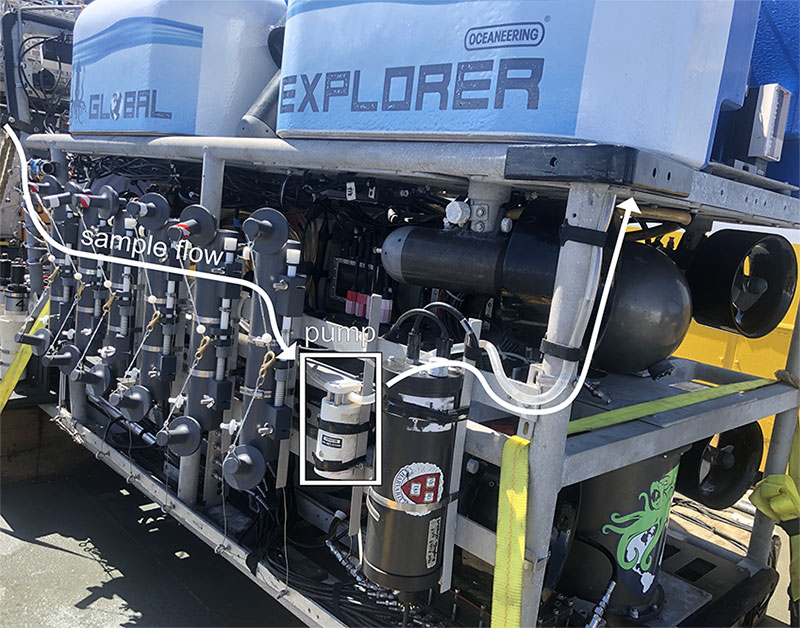

Water is pumped from the front of remotely operated vehicle (ROV) Global Explorer, through a large filter (positioned behind the sampling bottles), and out the back. Over the course of an ROV dive, approximately 50 liters of water can be filtered while video observations are made. This allows scientists to capture the eDNA that the animals we see release into the water around them. If they can collect enough eDNA, they can positively identify the potentially unknown species that they observe but cannot capture.